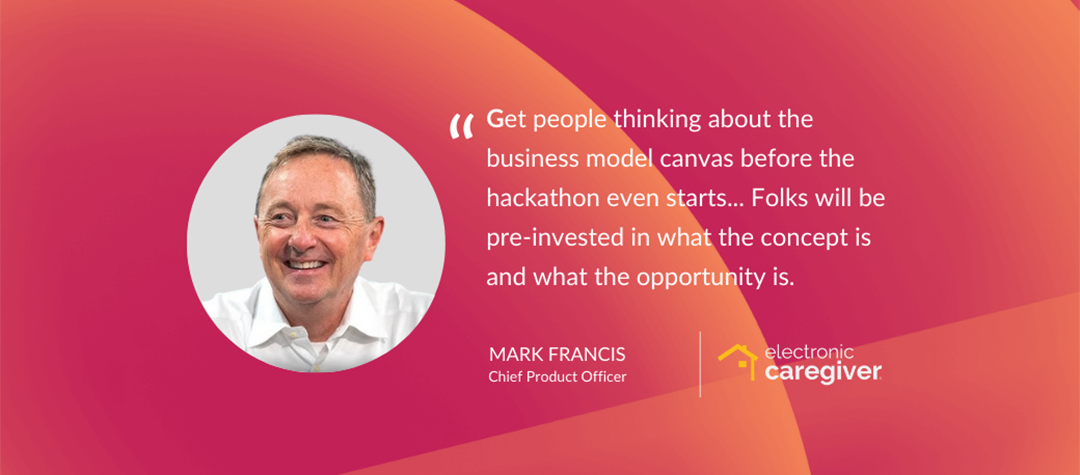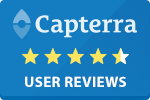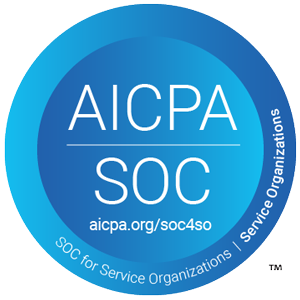Informed by tenures at Intel and Amazon, Mark Francis prioritizes agile teamwork and mindful speed to shape the future of healthcare
Disclaimer: The opinions represented here are those of the individual and do not necessarily represent those of their current or former employer.
In the fast-evolving world of health technology, the pressure to innovate is immense. For Mark Francis, Chief Product Officer at Electronic Caregiver and former Amazon executive, innovation isn’t about flashy features or hype-driven disruption. It’s about building the right things, with the right people, at the right time. And doing so responsibly.
From leading product teams in the high-speed environment of big tech to navigating the highly regulated terrain of healthcare, Francis brings a rare blend of agility and intention to his work. In a conversation with us, Mark shared insights on what it takes to create impactful products in health tech. He explored why prototypes matter more than pricing studies, how real innovation demands sustained collaboration, and why speed must always be balanced with safety when lives are on the line.
Watch the full interview below, or read on for a selection of key takeaways.
Key takeaways:
- Stay agile, test early. Prototyping quickly and getting customer feedback is more important than nailing pricing or long-term financial modeling up front.
- Create mission-driven teams. Projects go further with unified participants.
- Start thinking about products before the hackathon begins. By laying a foundation with a business model canvas, teams can innovate more efficiently.
- Practice regulatory mindfulness. Health tech cannot afford to “move fast and break things.”
- Make innovation part of the culture. Programs framed as incubators or accelerators yield deeper learning and better outcomes.
The Amazon Ethos: Speed, Structure, and Customer Obsession
Before Electronic Caregiver, Francis honed his product thinking at Amazon. The company is known for its breakneck pace and rigorous customer focus, a model that resulted in disruptive innovations like Amazon Prime. The lessons he learned there continue to shape his approach to product development today, though a clear standout is to begin with the end in mind. If the customer’s needs are the focus of each product, the odds of a successful launch are much higher.
“At Amazon, if you go through that process of working backward, focusing on the customer’s needs, it starts with writing a press release. The company was very willing to give almost anyone who would go through that process resources to build. But it was all about customer obsession and moving fast. We got the resources to do things, but we had to get things in the market within a year.
We didn’t want to do a pricing study. We didn’t want to do just focus groups. We wanted to say, here’s something we built for customers. Will you use this? And using it was more important than ‘Would you pay for it?’”
At Amazon, the “working backward” process begins with a fictional press release for the product, forcing clarity around the customer value proposition before writing a line of code. This principle, combined with a culture that rewards rapid deployment, taught Francis the value of structured experimentation. Even in a large organization, speed and autonomy were possible if the customer remained the focus.
That’s the same spirit fueling Hackathon 5, the latest evolution of Brightidea’s Hackathon solution.
Hackathon 5 isn’t just about organizing events. It’s about creating structured spaces where teams can innovate fast, stay focused on real customer problems, and bring ideas to life quickly and with impact. Its features are purpose-built to support the kind of experimentation and focus Amazon is known for, like fostering team collaboration and adding structure to innovation via robust project management tools.
Request a demo today to see how Hackathon 5 can help your team innovate.
Create Mission Driven Teams and Be Open to External Innovation
According to our survey data, only 28% of companies that run hackathons include a clear evaluation and resource allocation process, and only 18% of respondents said that company innovation was their biggest benefit. Together, those numbers imply there’s a disconnect between running hackathons and ideas being successfully implemented in the real world. According to Francis, organizations must rethink how they structure innovation initiatives to bridge the gap.
“The most powerful hackathon I was involved in was when I was at AWS working with the robotics team… We worked with our technology to help NASA engineers create a simulation of the part of Mars where they were landing. We then had a simulated model of the rover… We did a public open-source hackathon to say, ‘Hey, look, the rover is designed to land at point A. Here are the points that NASA wants to explore. We’re going to give you all the tools, techniques, simulation engines.
We ended up having over a thousand teams from across the world participate. We announced a winner at one of the big AWS events, re:Mars at that time… It turned out that the upfront training and framing helped galvanize teams and make it more purposeful. So it helped address that issue of not just hacking for the sake of hacking, but doing something with a purposeful outcome.”
In this model, innovation is a cultural endeavor of applied learning, external iteration, and mentorship. These forces help hackathon solutions mature into viable products and skilled teams equipped to succeed. By adopting a similar mindset — one that encourages external and outside-the-box thinking — organizations can create solutions that overcome seemingly herculean initial challenges.
A prime example is Children’s Miracle Network Hospitals (CMN), which partnered with Brightidea to revitalize its innovation approach. Facing a decade-long stagnation in idea generation, CMN organized a live hackathon during their annual culture week, engaging over 150 of their 160 employees. This initiative led to groundbreaking projects, including a cryptocurrency donation platform and a new campaign that raised over $350,000. The hackathon not only produced immediate results but also fostered a culture of continuous innovation within the organization.
Start Thinking About Products Before the Hackathon Starts
Hackathons give innovative ideas room to shine, but the ones with a clear vision shine even brighter. According to Francis, the easiest way to ensure product-market clarity is to get teams thinking about what the opportunities are before the hackathon ever begins.
“At Intel, when we would run hackathons, we’d start by doing a briefing and a training on what’s called the business model canvas. It’s a nice one-page tool to help frame up what a business concept is, the different channels, the different competitors, the go-to-market, and how to price it. We’d get people thinking about that before the hackathon even starts… Folks are pre-invested in what the concept is and what the opportunity is.”
The business market canvas is a tool that organizations can fit into their workflows with relative ease. By using that strategy, it’s easier to ensure that teams have a clear understanding of what they’re trying to accomplish. Not only that, but they’ll also be able to contextualize what they’re creating within the broader market. That can help identify minimum viable features, pricing, and more.
The Health Tech Caveat: Measured Speed, Not Reckless Acceleration
While Francis embraces agile development, he draws a hard line when it comes to applying “move fast and break things” to healthcare. In an industry where lives are at stake, recklessness isn’t just irresponsible: It’s dangerous. Unlike industries like transportation, delivery, and wearables, there’s a real need in the healthcare industry to shirk traditional Silicon Valley disruptor mindsets, and not everyone understands that yet.
“Everybody needs to come to an understanding that health tech is not a place where you can move fast and break things. Because if you break things in health tech, people can die. That doesn’t mean you can’t move fast, but you need to move fast in a measured way… You need to understand what the regulations are and work within those regulations from the very get-go.”
Francis’s stance reflects a growing consensus among health tech leaders: Innovation must be governed by ethical rigor and regulatory literacy. Moving quickly is still important, but not at the expense of patient safety. Instead, teams must operate within well-defined guardrails, aligning creativity with compliance from the very beginning.
Those rules have been broken in the past, resulting in tangible harm. A notable example is the Therac-25 radiation therapy machine incidents in the mid-1980s. Due to software errors and the removal of critical hardware safety interlocks, the Therac-25 administered massive overdoses of radiation to patients, resulting in severe injuries and deaths.
Innovation is a Team Sport, Not a Solo Sprint
Invention is often romanticized as the domain of lone geniuses working in isolation. But in practice, bringing a product to life is a collective effort. Francis underscores that it takes a diverse, mission-aligned team to carry an idea through to completion. When leaders give teams the resources to create innovative environments, they can stop working on prototypes and start working on products.
“There’s an old saying: If you want to go fast, go alone. If you want to go far, go together. I think that’s so much the case when it comes to innovation and invention. You might have that brilliant inventor who comes up with concepts, but translating that into a sustained product is often very different.
The engineering building at Stanford, I think it’s named Terman Hall, after one of their engineering deans. And he said the biggest, most humbling thing for him was to learn how different it is to build a prototype and then build a product. And it takes a team to be able to do that. So as a leader of the team, your key is to pull together a diverse set of stakeholders that are mission-driven and want to go fast, then unleash them to build.”
Francis’s leadership philosophy centers on enabling others. By assembling teams with varied expertise—engineering, clinical, operations—he creates environments where innovation isn’t just possible, it’s inevitable. He sees his role not as a decision-maker, but as an orchestrator who clears the path for builders.
The Future of Health Innovation Is Measured, Mission-Driven, and Team-Centered
Mark Francis’s insights offer a roadmap for building responsibly in one of the most complex and high-stakes industries. By advocating for agile experimentation, mission-aligned teams, and regulatory respect, he challenges the Silicon Valley mythos of disruption for its own sake. To learn more about Mark Francis’ work, visit Electronic Caregiver’s website.
For more information on innovation initiatives, check out the Brightidea blog and stay tuned for the State of Hackathons survey.


